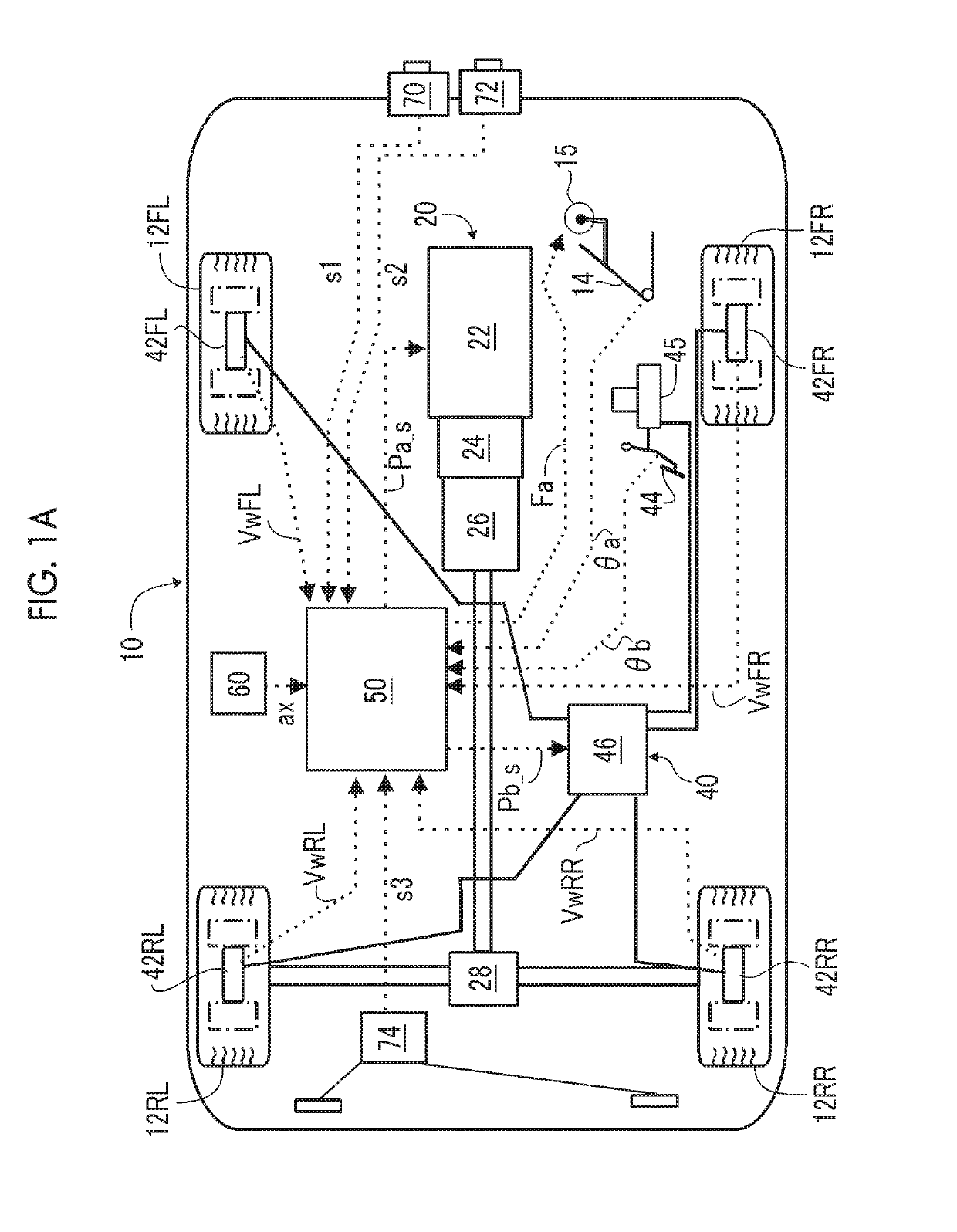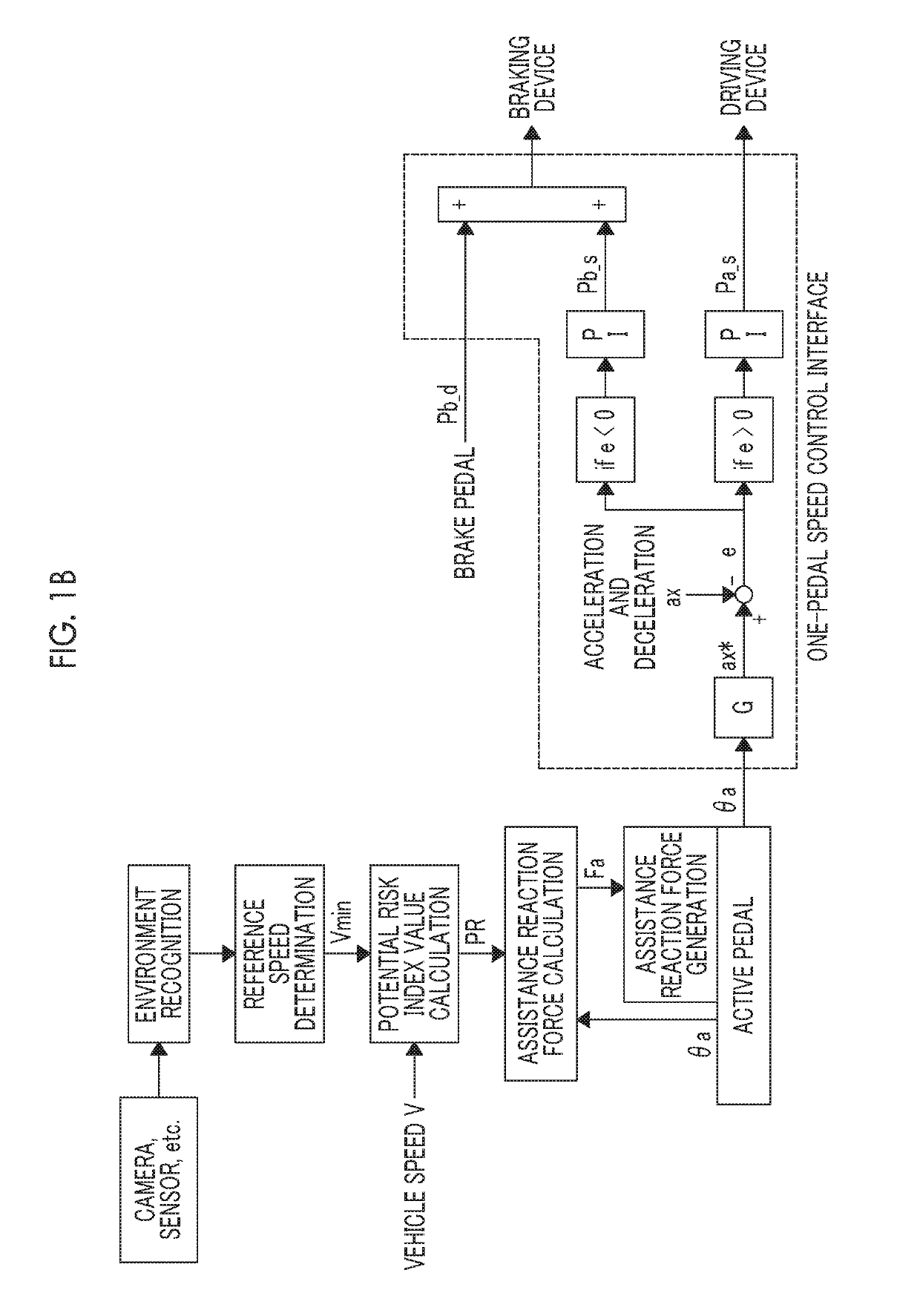Driving assistance control device
a technology of driving assistance and control device, which is applied in the direction of automatic initiation, transportation and packaging, propulsion unit arrangement, etc., can solve the problems of conflict of intention between human and machine, inability to achieve the preferred degree of deceleration, and difficulty for the driver (human) to understand
- Summary
- Abstract
- Description
- Claims
- Application Information
AI Technical Summary
Benefits of technology
Problems solved by technology
Method used
Image
Examples
Embodiment Construction
[0035]Configuration of Vehicle
[0036]Referring to FIG. 1A, in a vehicle 10 such as a car in which a preferred embodiment of a driving assistance control device of the present disclosure is incorporated, right and left front wheels 12FR, 12FL, right and left rear wheels 12RR, 12RL, a driving device 20 that generates a braking and driving force for each wheel (in the illustrated example, solely a rear wheel since a vehicle is a rear wheel driven vehicle in the illustrated example), a steering device (not illustrated) for controlling a steering angle of vehicle wheels, and a brake device 40 that generates a braking force for each wheel are mounted in a normal aspect. The driving device 20 is configured such that a driving torque or a rotational force is transmitted from an engine and / or an electric motor 22 (which may be a hybrid driving device including both the engine and the electric motor) to rear wheels 12RL, 12RR via a torque converter 24, a transmission 26, a differential gear de...
PUM
 Login to View More
Login to View More Abstract
Description
Claims
Application Information
 Login to View More
Login to View More - R&D
- Intellectual Property
- Life Sciences
- Materials
- Tech Scout
- Unparalleled Data Quality
- Higher Quality Content
- 60% Fewer Hallucinations
Browse by: Latest US Patents, China's latest patents, Technical Efficacy Thesaurus, Application Domain, Technology Topic, Popular Technical Reports.
© 2025 PatSnap. All rights reserved.Legal|Privacy policy|Modern Slavery Act Transparency Statement|Sitemap|About US| Contact US: help@patsnap.com



